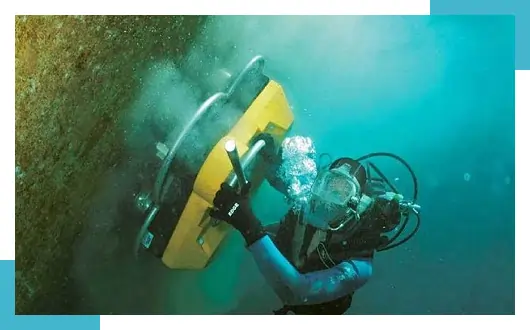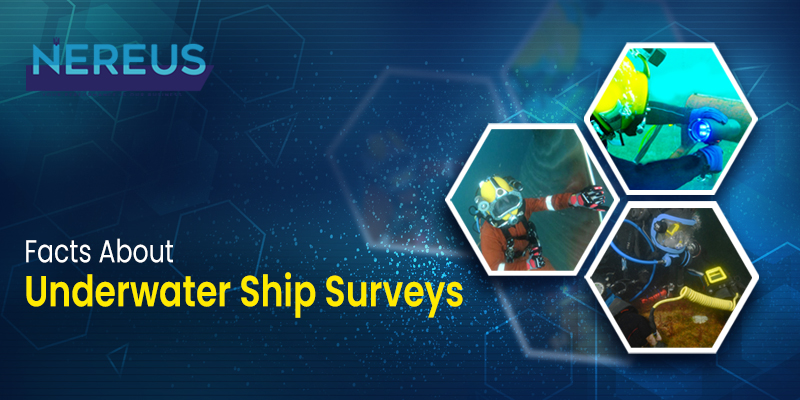Underwater ship surveys are indispensable in the maritime sector, ensuring vessels comply with regulations and maintain safety standards. These inspections are vital, not just during scheduled assessments but also in emergencies, guaranteeing a ship’s seaworthiness. Underwater hull survey are conducted by skilled professionals employing diverse techniques, including underwater class survey, CCTV inspection, underwater videography, sonar wave surveys, and ballast tank inspections.
What Is an Underwater Ship Survey?
The purpose of an underwater ship survey is to examine ships and confirm that they adhere to set regulations and safety standards. By conducting scheduled inspections, we can maintain vessels in good condition by finding any issues. Unscheduled inspections are essential in the event of accidents or emergencies as it is necessary to guarantee that the ship is seaworthy.
Carrying out an underwater hull survey requires surveyors to have comprehensive knowledge and be skilled in practical techniques that will assist them in examining every detail of the vessel and performing various tasks on board. These tasks may involve conducting in-water class surveys, hull cleaning, taking underwater videos or photographs, surveying using sonar waves, inspecting ballast tanks and performing other routine maintenance procedures.
Looking for the best underwater ship Survey in Singapore ? Contact Nereus Subsea now.
Why Is an Underwater Ship Survey Important?
Underwater ship survey is essential as constant dry docking is costly and nearly impossible. Downtime increases which lead to a larger cost than necessary for maintenance on the dock. As a solution underwater inspections became common, it involved getting highly qualified and experienced divers who could dive underwater check and identify imminent problems beneath the waterline and offer immediate solutions for them. Underwater surveys are more of a precautionary measure taken to avoid prolonged repairs anytime in the future.
Why Do Underwater Ship Surveys Matter?
Dry docking is costly and time-intensive process, which isn’t always feasible. Underwater cctv inspections are proactive measures, preventing extensive future repairs and minimizing downtime. Society classifications mandate annual inspections for large vessels, supplementing them with secondary assessments every three years. These evaluations are more than protective measures; they safeguard against accidents, injuries, and financial losses, ensuring the well-being of ship operators, employees, insurers, and stakeholders.
Different Types of Underwater Ship Surveys
IN WATER SURVEY & UWILD
In-water survey (IWS) is a relatively new way to assess the condition of an underwater ship without requiring it to be dry-docked for inspection. IWS not only allows for easier assessment but also saves time and money because all inspections are done during normal vessel operations rather than having to undergo costly dry-docking. UWILD requires competent and certified divers who can identify potential problems before they occur. Underwater hull inspections also ensure that expensive or extensive repair work will be avoided when found sooner rather than later.
Sea Chest Internal Inspection
Sea chests are cavities built into a vessel’s hull to help increase the efficiency of pumping seawater into the internal pipework system to support the vessel’s engine cooling, ballast, and firefighting purposes. These grids called ‘sea chest gratings’ prevent the passage of large objects such as trash, fish, nets, etc. These inspections help to identify any extent of damage prevailing in the sea chest.
Hull Coating Inspection
A ship’s hull is considered to be the main structural element of the ship. By regular maintenance and inspection, sailing is made easier and safer.
CCTV Inspection
Underwater CCTV inspection allows divers to accurately record and see the present condition of the vessel that cannot be visually inspected during routine inspections because of excessive water depths or turbidity. Clients can monitor real-time footage of the submerged surface during this inspection.
Contact Nereus Subsea for the best underwater ship maintenance services.
Some Other Surveys Include the Following
Docking Survey
This survey needs the vessel to be dry-docked. It is conducted every 2 years or twice in 5 years. The survey inspects underwater fittings and hull fittings, special attention is given to underwater shell plating. This can be exempted for vessels that carried out In Water Surveys Singapore.
Repair Survey & Damage Survey
A repair survey is conducted to assess the status of the vessel to determine if the vessel has been restored to a condition meeting the requirements of the surveyor. Temporary repairs may be permitted by the issuance of an appropriate recommendation or condition of class. In order to determine the magnitude of damage caused, insurance companies ask for a detailed survey report which includes an estimated cost for repairs and necessary work that needs to be done.
There are a variety of different types of underwater hull surveys, each of which serves a different purpose. Some surveys are used to assess the condition of the hull, while others are used to examine the condition of the machinery. Still, others are used to investigate the sea bed for environmental impact assessments. Classification societies use these surveys to assess the safety and compliance of ships. Insurance companies use them to determine premiums and coverage and shipowners use them to plan repairs and maintenance.
Each of these surveys is important in its own way, and marine industry professionals need to be aware of all of them in order to properly assess and manage.
The Industry’s Need for Comprehensive Understanding
Underwater class survey are multifaceted, serving diverse purposes in the maritime landscape. Hull conditions, machinery states, and environmental impacts are all scrutinized. Classification societies employ these surveys to assess ship safety and compliance, while insurers determine premiums and coverage. Marine services provides these assessments for ship repair and ship maintenance. Stay updated on the latest marine services UAE and ensure your vessels sail securely and efficiently.

